20 Must-Track Customer Service Metrics for Better Results
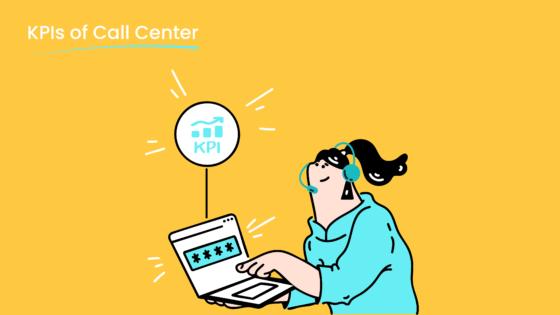
In today’s fast-paced world, measuring the right metrics can make or break your customer service strategy. Customer service KPI metrics are no longer just numbers—they’re the heartbeat of your business. Did you know that 33% of customers will leave a brand after just one bad experience? That’s why tracking these metrics is crucial. They help you understand what’s working, fix what’s not, and keep your customers happy.
Companies like Sobot are leading the way by offering tools that make tracking and optimizing these metrics a breeze. With their solutions, you can boost satisfaction, improve retention, and streamline operations—all while staying ahead of the competition in 2025.
Understanding Customer Service KPI Metrics
What Are Customer Service KPIs?
Customer service KPIs, or key performance indicators, are measurable values that show how well your customer service team is achieving its goals. Think of them as a scoreboard for your customer success efforts. These metrics help you track everything from how quickly issues are resolved to how satisfied your customers feel after interacting with your team.
For example, metrics like Customer Satisfaction Score (CSAT) and Net Promoter Score (NPS) reveal how happy your customers are. Meanwhile, operational indicators like Average Handle Time (AHT) and First Response Time (FRT) measure the efficiency of your team. By keeping an eye on these numbers, you can identify what’s working and where improvements are needed.
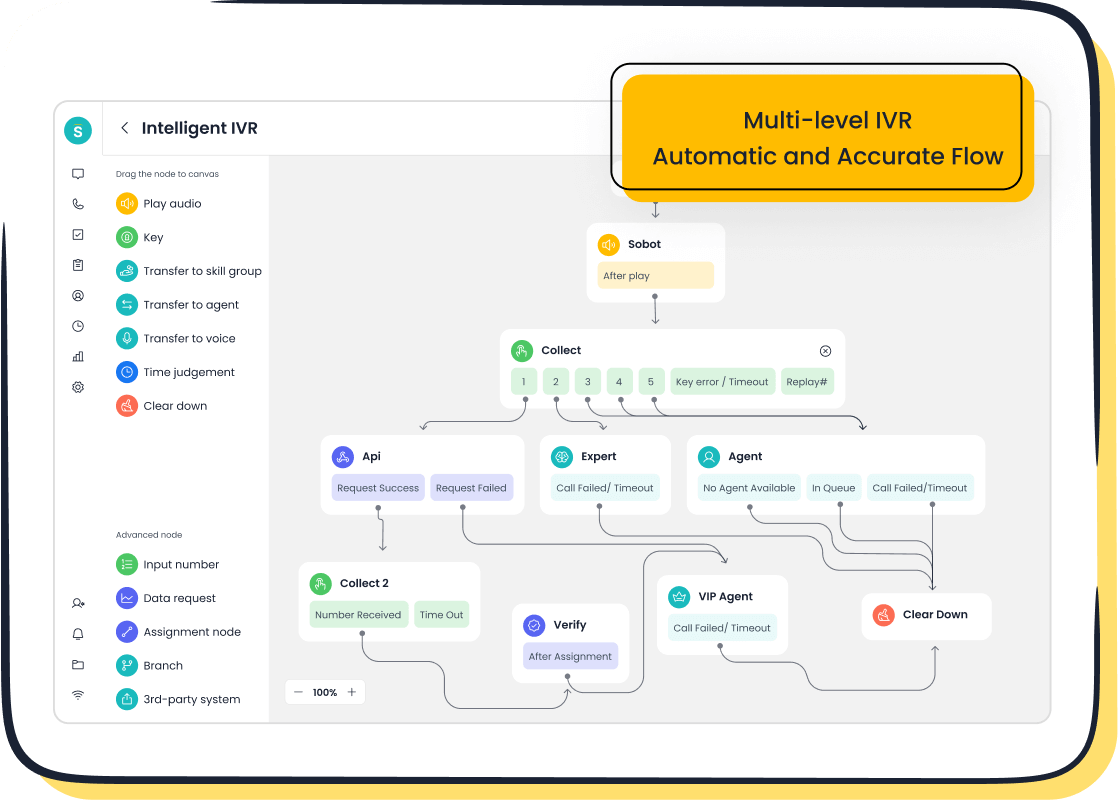
Pro Tip: Tools like Sobot’s Voice/Call Center make it easy to monitor these KPIs in real time, helping you stay ahead of the curve.
Why Are Customer Service Metrics Crucial in 2025?
In 2025, customer expectations are higher than ever. People want fast, personalized, and seamless experiences across all channels. Tracking customer service metrics is no longer optional—it’s essential.
Here’s why:
- Improved Performance: Metrics like Resolution SLA Compliance Rate highlight areas where your team excels and where they need coaching.
- Enhanced Satisfaction: Monitoring customer satisfaction metrics directly impacts retention and revenue.
- Operational Efficiency: Consistent tracking uncovers inefficiencies, helping you benchmark against competitors.
| Benefit of Tracking KPIs | Description |
|---|---|
| Improved Performance | Identifies high performers and skills gaps for better training opportunities. |
| Enhanced Customer Satisfaction | Boosts retention, referrals, and revenue by monitoring satisfaction levels. |
| Operational Efficiency | Reveals strengths and weaknesses for better benchmarking. |
With tools like Sobot’s AI-powered solutions, you can analyze these metrics effortlessly, ensuring your business stays competitive.
How Metrics Drive Customer Satisfaction and Retention
Tracking the right metrics doesn’t just improve your operations—it transforms your customer relationships. When you measure satisfaction through KPIs like CSAT or CES (Customer Effort Score), you gain insights into what your customers truly value.
For instance:
- CSAT helps you pinpoint areas for improvement.
- NPS measures loyalty and the likelihood of recommendations.
- Churn Rate reveals retention challenges.
An integrated strategy for measuring satisfaction not only quantifies customer happiness but also provides actionable insights. These insights help you:
- Identify pain points in the customer journey.
- Prioritize initiatives that improve satisfaction.
- Benchmark your performance against industry standards.
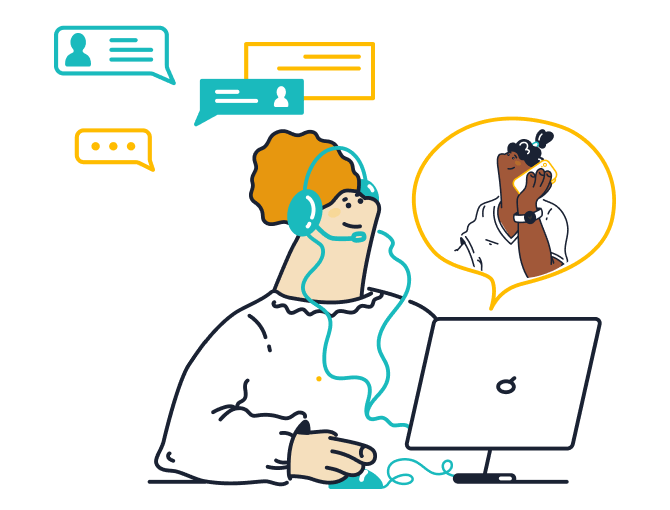
Sobot’s solutions, like its AI-powered Voicebot, enhance these metrics by offering personalized, efficient support. This leads to happier customers and stronger loyalty.
Did you know? 77% of business leaders believe deeper personalization increases retention, while 66% say it lowers acquisition costs. That’s the power of tracking customer service KPIs effectively.
Key Customer Satisfaction Metrics

When it comes to customer service KPI metrics, customer satisfaction metrics are the cornerstone of understanding how well your business meets customer expectations. Let’s dive into three key performance indicators that can transform your approach to satisfaction.
Customer Satisfaction Score (CSAT)
CSAT measures how happy your customers are with a specific interaction or experience. It’s usually calculated by asking a simple question like, “How satisfied were you with our service today?” Customers rate their experience on a scale, often from 1 to 5, with higher scores indicating greater satisfaction.
Why is CSAT so important? Because it directly links to your bottom line. Studies show that a 5% increase in customer satisfaction can boost profits by 25% to 95%. On the flip side, 51% of customers won’t return after a single poor experience. That’s why tracking CSAT is essential for improving retention and loyalty.
| Statistic | Description |
|---|---|
| 5% increase in customer satisfaction | Can boost profits by 25% to 95% |
| 51% of customers | Will not return after a single poor experience |
| 33% of customers | Will consider switching brands after bad service |
| 72% of customers | Will share a positive experience with others |
Sobot’s Voice/Call Center can help you track CSAT in real time. With features like intelligent IVR and AI-powered Voicebot, you can ensure every interaction leaves your customers smiling.
Net Promoter Score (NPS)
NPS measures customer loyalty by asking one simple question: “How likely are you to recommend us to a friend or colleague?” Customers respond on a scale from 0 to 10, and their answers classify them as promoters, passives, or detractors.
Why does NPS matter? A high NPS score doesn’t just mean happy customers—it also attracts investors. Satisfied customers are more likely to stay loyal and recommend your brand, which drives new customer acquisition. Research also shows that NPS can predict short-term sales growth, making it a powerful tool for revenue forecasting.
For example, businesses that focus on improving NPS rather than just achieving high scores often see better long-term results. Sobot’s AI-powered solutions, like its unified workspace, make it easy to monitor NPS and take action to improve customer loyalty.
Customer Effort Score (CES)
CES measures how easy it is for customers to get their issues resolved. The question is simple: “How much effort did you personally have to put forth to handle your request?” Lower effort equals higher satisfaction.
Why is CES so effective? Because customers value convenience. According to Gartner, 94% of customers who experience low effort are likely to purchase again, while 96% of those with high-effort experiences report disloyalty. The numbers don’t lie—making things easier for your customers pays off.
| Source | Finding | Percentage |
|---|---|---|
| Gartner | Customers with low-effort experiences repurchase | 94% |
| Gartner | High-effort experiences lead to disloyalty | 96% |
| HBR | Low-effort customers likely to repurchase | 94% |
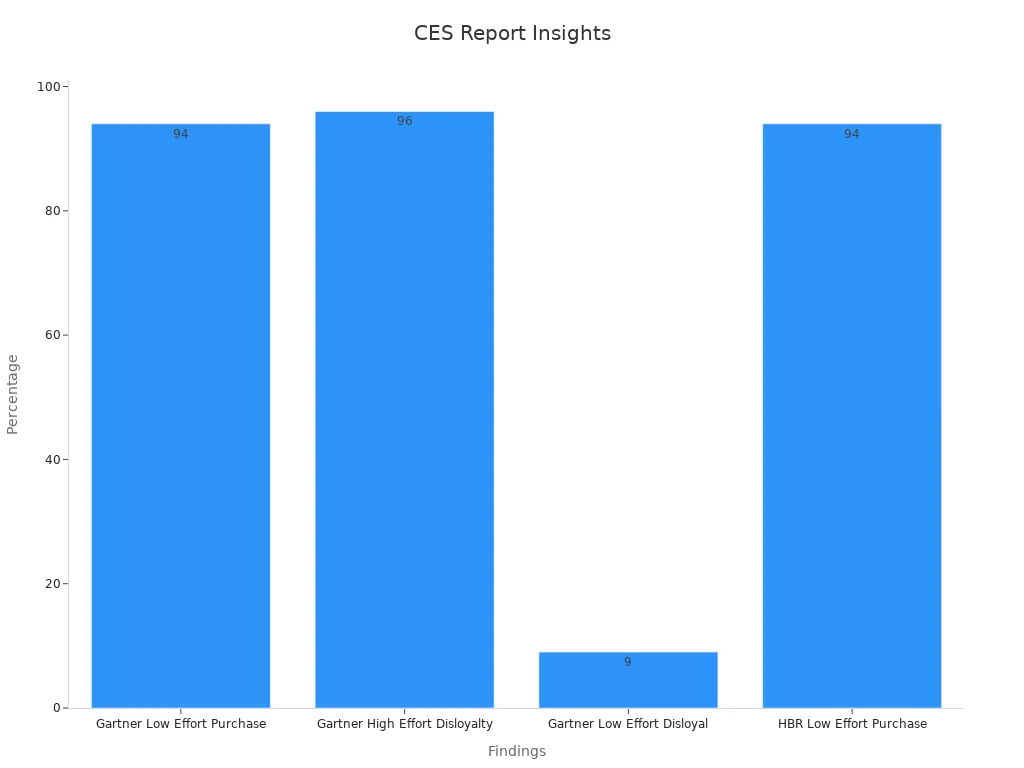
Sobot’s AI-powered Voicebot and omnichannel solutions reduce customer effort by providing seamless, personalized support across all channels. Whether it’s resolving issues quickly or offering self-service options, Sobot helps you keep your customers happy and loyal.
First Contact Resolution (FCR)
First Contact Resolution (FCR) is one of the most critical metrics in customer service. It measures your ability to resolve customer issues during their first interaction with your team, whether it’s through a call, chat, or email. A high first call resolution rate means your team is efficient, knowledgeable, and equipped to handle customer concerns without the need for follow-ups.
Why does FCR matter so much? Because customers value quick and effective solutions. According to a study by MetricNet, every 1% improvement in your first contact resolution rate can lead to a 1% increase in customer satisfaction. That’s a big deal when you’re trying to build loyalty and reduce churn.
How to Calculate FCR
Calculating FCR is straightforward. Divide the number of issues resolved on the first contact by the total number of issues handled, then multiply by 100. For example, if your team resolved 800 out of 1,000 issues on the first attempt, your FCR would be 80%.
Pro Tip: Don’t forget to track FCR across all channels, not just phone calls. Customers expect the same level of efficiency whether they’re chatting online or emailing your support team.
Benefits of High FCR
Improving your first call resolution rate offers several benefits:
- Enhanced Customer Satisfaction: Customers don’t want to repeat themselves or wait for callbacks. Resolving their issues quickly makes them happier.
- Reduced Operational Costs: Fewer follow-ups mean less time spent on each case, which lowers your overall costs.
- Increased Agent Productivity: Agents can focus on new cases instead of revisiting old ones.
How Sobot Helps You Improve FCR
Sobot’s Voice/Call Center is designed to boost your first call resolution rate. With features like intelligent IVR and AI-powered Voicebot, your team can route calls to the right agents and provide instant answers to common questions. The unified workspace ensures agents have all the customer information they need at their fingertips, reducing the time to resolution.
For example, Samsung used Sobot’s solutions to streamline their customer service operations. By integrating Sobot’s platform, they achieved a 97% customer satisfaction rate and saw a 30% increase in agent efficiency. This success was largely due to their improved resolution processes, including a higher first contact resolution rate.
Tips to Improve FCR
Want to improve your FCR? Here are some actionable tips:
- Train Your Team: Equip agents with the knowledge and tools they need to resolve issues on the first try.
- Use AI-Powered Tools: Solutions like Sobot’s Voicebot can handle repetitive queries, freeing agents to focus on complex problems.
- Analyze Common Issues: Identify recurring problems and create a knowledge base to address them proactively.
- Monitor and Optimize: Regularly review your FCR data to spot trends and areas for improvement.
Remember, improving FCR isn’t just about resolving issues faster. It’s about creating a seamless experience that makes your customers feel valued and understood.
Did you know? Businesses with a high first call resolution rate often see a 15% reduction in operational costs and a 20% boost in customer loyalty.
By focusing on FCR, you’re not just solving problems—you’re building trust and loyalty that lasts.
Operational Efficiency Metrics for Better Results
Operational efficiency metrics are the backbone of a well-functioning customer service team. They help you measure how effectively your team handles inquiries, resolves issues, and manages resources. Let’s explore three key metrics that can transform your operations.
Average Handle Time (AHT)
Average Handle Time (AHT) measures the average duration of customer interactions, including talk time and after-call work. It’s a critical metric for assessing efficiency and customer satisfaction.
Why does AHT matter? Because it directly impacts your team’s productivity and your customers’ experience. Shorter, high-quality interactions mean happier customers and better resource utilization. On the other hand, longer handle times can frustrate customers and increase operational costs.
| Evidence Description | Impact on Operational Efficiency |
|---|---|
| AHT directly impacts efficiency and customer satisfaction. | A low AHT indicates efficient service, while a high AHT may lead to customer dissatisfaction. |
| Monitoring AHT leads to improved customer satisfaction and better resource utilization. | Shorter, high-quality interactions enhance overall call center efficiency. |
| AHT helps identify areas for process optimization. | Streamlining processes can lead to quicker customer interactions and potential cost savings. |
| Improved AHT can lead to better agent utilization. | Maintaining service levels with a leaner team can reduce overall operational costs. |
| AHT is used to measure adherence to SLAs. | Meeting service level commitments is crucial for maintaining customer satisfaction. |

Pro Tip: Use tools like Sobot’s Voice/Call Center to monitor AHT in real time. Features like call tracking and AI-powered Voicebot help streamline processes, reduce handle times, and improve overall efficiency.
First Response Time (FRT)
First Response Time (FRT) measures how quickly your team responds to customer inquiries. It’s one of the most important metrics for customer satisfaction.
Why is FRT so crucial? Customers expect fast responses. A quick reply shows you value their time and concerns. Studies reveal that businesses with shorter FRTs often see higher customer satisfaction and retention rates.
How to Improve FRT
- Automate Responses: Use AI-powered tools like Sobot’s Voicebot to handle repetitive queries instantly.
- Optimize Workflows: Streamline processes to ensure inquiries are routed to the right agents quickly.
- Monitor Performance: Regularly track FRT data to identify bottlenecks and improve response times.
Did you know? Businesses that reduce their FRT by just 20% can see a significant boost in customer loyalty.

Sobot’s unified workspace makes it easy to manage inquiries across channels, ensuring your team responds promptly. With features like intelligent IVR and real-time monitoring, you can keep your FRT low and your customers happy.
Cost Per Contact
Cost Per Contact measures the average cost of handling a customer interaction. It’s a vital metric for operational budgeting and resource allocation.
Why should you track this? It helps you evaluate the efficiency of your communication strategies. By comparing costs against benefits, you can identify areas for improvement and optimize your budget.
For example, reducing AHT and improving FRT can lower your cost per contact. Efficient processes mean fewer resources are needed to handle inquiries, saving you money while maintaining service quality.
Sobot’s solutions, like its AI-powered Voicebot and bulk outbound task automation, help reduce costs by streamlining operations. These tools allow you to handle more inquiries with fewer resources, improving efficiency without compromising customer satisfaction.
Note: Cost-per-contact analysis isn’t just about cutting costs. It’s about balancing efficiency with quality to deliver exceptional service at a sustainable price.
Ticket Volume
Ticket volume measures the total number of customer inquiries your team handles within a specific period. It’s one of the most straightforward metrics, but don’t underestimate its importance. Tracking ticket volume helps you understand demand patterns, allocate resources effectively, and identify trends that could impact your customer service strategy.
Why should you care about ticket volume? Because it’s the foundation for improving your team’s efficiency. A sudden spike in tickets might indicate a product issue or a marketing campaign that’s driving customer interest. On the other hand, a consistent ticket volume lets you plan staffing and workflows more effectively.
How Ticket Volume Impacts Your Business
Ticket volume isn’t just about counting inquiries. It’s about understanding the bigger picture. For example:
- Resource Allocation: Knowing your ticket volume helps you decide how many agents you need during peak times.
- Customer Experience: High ticket volume paired with a low rate of ticket resolution can frustrate customers.
- Operational Insights: Analyzing ticket trends reveals recurring issues, helping you address them proactively.
Pro Tip: Use tools like Sobot’s unified workspace to manage ticket volume across multiple channels. This ensures your team stays organized and efficient, even during busy periods.
How to Manage Ticket Volume Effectively
Managing ticket volume starts with understanding its root causes. Are customers asking the same questions repeatedly? Are certain channels receiving more inquiries than others? Here’s how you can stay on top of it:
- Automate Repetitive Tasks: Deploy AI-powered tools like Sobot’s Voicebot to handle common queries. This reduces the workload on your agents.
- Monitor Trends: Use analytics to spot patterns in ticket volume. For example, Sobot’s real-time monitoring tools can help you identify spikes and adjust your strategy accordingly.
- Improve Resolution Rates: Focus on increasing the rate of ticket resolution. Faster resolutions mean fewer follow-ups, which keeps ticket volume manageable.
Real-Life Example
Samsung faced challenges with high ticket volume due to its global customer base. By implementing Sobot’s all-in-one contact center solution, they streamlined operations and improved their rate of ticket resolution. This led to a 30% increase in agent efficiency and a 97% customer satisfaction rate. Managing ticket volume effectively helped Samsung deliver a better experience to millions of customers.
Why Sobot Makes a Difference
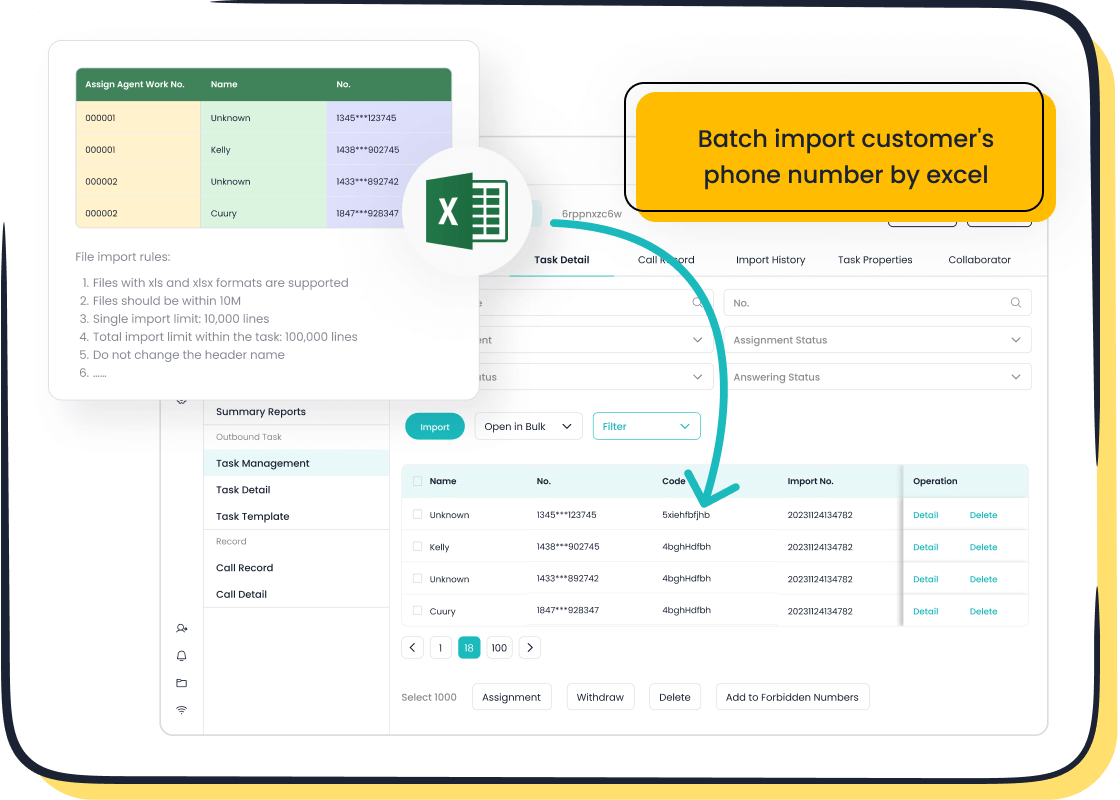
Sobot’s solutions are designed to simplify ticket management. With features like intelligent IVR, AI-powered Voicebot, and unified workspaces, you can handle high ticket volumes without compromising service quality. These tools ensure your team resolves issues quickly, boosting the rate of ticket resolution and keeping customers happy.
Did you know? Businesses that use AI tools to manage ticket volume see up to a 40% reduction in response times and a significant improvement in customer satisfaction.
By tracking ticket volume and optimizing your processes, you’re not just solving problems—you’re building a customer service strategy that scales with your business.
Agent Performance Metrics to Track
Agent Utilization Rate
Agent Utilization Rate is a key metric that shows how much time your agents spend actively helping customers versus being idle. It’s calculated using this formula:
Agent Utilization Rate (%) = Time Spent Handling Calls / Total Available Time X 100
Why does this matter? Because it helps you balance productivity and workload. If your agents are overworked, their performance drops. If they’re underutilized, you’re wasting resources. The average utilization rate in call centers is around 48%, which allows time for breaks and after-call tasks.
By tracking this metric, you can optimize staffing levels and ensure your team stays productive without burning out. Tools like Sobot’s Voice/Call Center make this easier by providing real-time monitoring and analytics. This way, you can adjust schedules and workloads on the fly to maintain efficiency.
Tip: Keep an eye on trends in utilization rates. A sudden drop might signal inefficiencies, while a spike could mean your team is stretched too thin.
Agent Satisfaction Score (ASAT)
Happy agents lead to happy customers. That’s why tracking Agent Satisfaction Score (ASAT) is so important. It measures how satisfied your team feels about their work environment, tools, and support.
Studies show a direct link between ASAT and customer satisfaction (CSAT). Here’s what the data says:
| Source | Evidence |
|---|---|
| Kodif | Research indicates a direct link between agent satisfaction and CSAT. |
| PartnerHero | Higher ASAT leads to higher CSAT, improving overall service efficiency. |
When your agents feel supported, they’re more likely to go the extra mile for customers. Sobot’s unified workspace simplifies their tasks by integrating all communication channels and customer data into one platform. This reduces frustration and boosts satisfaction, creating a win-win for your team and your customers.
Average Resolution Time (ART)
Average Resolution Time measures how quickly your team resolves customer issues. It’s a critical indicator of both efficiency and customer satisfaction. Shorter resolution times mean happier customers and more productive agents.
Tracking ART helps you identify bottlenecks and improve processes. For example:
- If ART is high, it might indicate a need for better training or tools.
- If ART is low, it shows your team is resolving issues efficiently.
Sobot’s AI-powered Voicebot can significantly reduce resolution times by handling repetitive queries and routing complex issues to the right agents. This ensures your team focuses on what matters most—delivering excellent service.
Did you know? Shorter ART correlates with higher customer loyalty, making it a must-track metric for any customer service team.
Adherence to Schedule
Adherence to schedule is a key metric that measures how well your agents stick to their assigned work schedules. It’s not just about clocking in and out—it’s about ensuring your team is available when customers need them most. If your agents miss their scheduled times, it can lead to longer wait times, frustrated customers, and lower satisfaction scores.
Why does this matter? Because timing is everything in customer service. Studies show that 75% of customers expect immediate responses, especially during peak hours. If your team isn’t adhering to their schedule, you risk losing customers to competitors who are more responsive.
How to Track and Improve Adherence to Schedule
Tracking this metric starts with monitoring your agents’ activity. Are they logging in on time? Are they taking breaks as planned? Here’s how you can improve adherence:
- Set Clear Expectations: Communicate schedules and break times clearly to your team.
- Use Real-Time Monitoring: Tools like Sobot’s Voice/Call Center provide live dashboards to track adherence.
- Automate Reminders: Send alerts to agents when they’re nearing break limits or need to log in.
Pro Tip: Reward agents who consistently adhere to their schedules. Recognition boosts morale and encourages better performance.
How Sobot Helps You Stay on Track
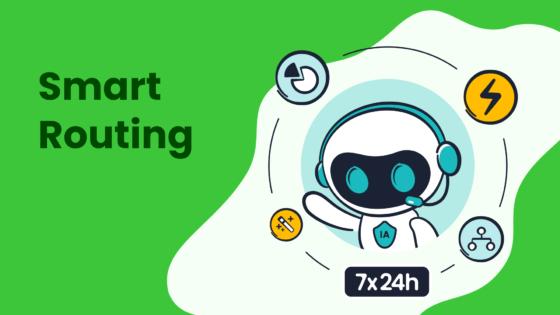
Sobot’s Voice/Call Center makes adherence to schedule easier than ever. Its real-time monitoring tools let you track agent activity and ensure they’re available when customers need them. The unified workspace simplifies task management, so agents can focus on delivering great service without worrying about schedules.
For example, Samsung used Sobot’s solutions to improve agent efficiency by 30%. By monitoring adherence and optimizing schedules, they reduced wait times and achieved a 97% customer satisfaction rate.
Did you know? Businesses that improve adherence to schedule often see a 20% boost in customer satisfaction and a significant reduction in operational costs.
By focusing on this metric, you’re not just managing time—you’re creating a seamless experience for your customers.
Customer Retention and Loyalty Metrics

Customer Retention Rate
Customer retention rate measures how well you keep your customers over time. It’s a simple formula: divide the number of customers you retain by the total number at the start of a period, then multiply by 100. This metric is a goldmine for understanding loyalty and predicting long-term revenue.
Why does it matter? Because loyal customers are your biggest asset. Studies show that 61% of small businesses rely on repeat customers for over half their revenue. Top 10% of loyal customers spend twice as much as the bottom 90%. Plus, customers spend 30% more after six months and 45% more after three years.
| Statistic | Source |
|---|---|
| 84% of companies improving customer experience see revenue uplift | Dimension Data |
| 61% of small businesses rely on repeat customers for over half their revenue | BIA Advisory Services |
| Customers spend 30% more after 6 months, 45% more after 36 months | Smile.io |
Sobot’s Voice/Call Center helps you retain customers by offering personalized support and seamless communication. Features like intelligent IVR and AI-powered Voicebot ensure your customers feel valued, boosting retention rates.
Churn Rate
Churn rate tracks the percentage of customers who stop doing business with you during a specific period. It’s the opposite of retention and a critical metric for understanding customer loyalty.
Why should you care? High churn rates hurt your revenue and brand reputation. Churn analysis helps you identify why customers leave and predict future churn. For example, businesses can use data analytics to engage at-risk customers with tailored strategies, improving satisfaction and retention.
| Aspect | Description |
|---|---|
| Revenue Churn | Indicates the loss of revenue from existing customers. |
| Customer Count | Doesn’t account for the number of customers lost, which can be misleading. |
| Customer Relationship | A low churn rate may not reflect strong loyalty due to external factors. |
| Seasonality | Reveals seasonal trends but doesn’t explain the reasons behind them. |
Sobot’s AI-powered solutions help reduce churn by offering proactive support. For instance, its unified workspace lets agents address customer concerns quickly, preventing dissatisfaction and boosting loyalty.
Customer Lifetime Value (CLV)
Customer lifetime value (CLV) measures the total revenue a customer brings over their relationship with your business. It’s a powerful metric for driving sustainable growth.
Why is CLV so important? It ties directly to retention. A positive customer experience boosts retention rates, which increases CLV. For example, SaaS companies aim for a CLV-to-CAC ratio of 3:1 to 5:1. Higher CLV means more revenue without the cost of acquiring new customers.
| Industry Type | CLV to CAC Ratio |
|---|---|
| SaaS | 3:1 to 5:1 |
| Enterprise Software | Higher due to long-term relationships |
| Insurance | Higher acquisition costs due to longer retention |
Sobot’s AI tools enhance CLV by improving customer experience. Features like real-time monitoring and omnichannel support ensure seamless interactions, keeping customers engaged and loyal.
Tip: Focus on improving CLV by delivering exceptional service. Happy customers stick around longer, spend more, and refer others to your business.
Repeat Purchase Rate
Repeat Purchase Rate measures how often your customers return to buy from you again. It’s a simple yet powerful metric that shows how well your business builds loyalty and drives customer retention. If you’re wondering why this matters, think about this: loyal customers spend 67% more than new ones, according to research by Bain & Company. That’s a huge opportunity for growth.
To calculate this metric, divide the number of repeat customers by the total number of customers during a specific period, then multiply by 100. For example, if 300 out of 1,000 customers made a second purchase, your repeat purchase rate would be 30%. Tracking this helps you understand how well your strategies encourage retention and repeat business.
Why should you care about improving this rate? Because it’s easier to retain existing customers than to acquire new ones. Plus, repeat buyers often become brand advocates, sharing their positive experiences with others. This boosts your reputation and attracts new customers organically.
Sobot’s AI-powered solutions can help you increase your repeat purchase rate. For instance, its Voice/Call Center offers personalized support that makes customers feel valued. Features like intelligent IVR and AI-powered Voicebot ensure seamless communication, encouraging customers to return. Samsung, one of Sobot’s clients, achieved a 97% customer satisfaction rate and saw significant improvements in customer retention by using Sobot’s tools.
Want to boost your repeat purchase rate? Start by analyzing customer behavior. Identify what keeps them coming back and optimize those touchpoints. Use tools like Sobot’s unified workspace to track interactions and provide tailored experiences. When customers feel understood and appreciated, they’re more likely to stick around—and buy again.
Did you know? Businesses with high repeat purchase rates often see a 20% increase in subscription renewal rates and long-term retention. That’s the power of keeping your customers happy.
Emerging Metrics for 2025
Social Media Response Time
Social media is where your customers talk, complain, and share their experiences. In 2025, tracking Social Media Response Time will be more important than ever. This metric measures how quickly your team replies to customer inquiries or comments on platforms like Facebook, Instagram, and Twitter.
Why does it matter? Because speed builds trust. Customers expect quick replies, especially when they’re frustrated. A fast response shows you care, while a high response rate prevents issues from escalating into public relations nightmares.
Here’s what makes this metric essential:
- 🕒 Response Time and Rate: It tracks how fast and how often your team answers social media inquiries.
- 🤝 Customer Trust: Quick replies foster trust and loyalty.
- 🚨 Crisis Prevention: Timely responses can stop small issues from turning into big problems.
Sobot’s omnichannel solutions make managing social media interactions seamless. With tools like real-time monitoring and AI-powered Voicebot, you can reply faster and keep your customers happy.
Tip: Aim for a response time under 30 minutes to show customers you’re listening. Studies reveal that businesses with faster response times see higher engagement and retention rates.
Sentiment Analysis Score
Understanding how your customers feel is key to improving their experience. Sentiment Analysis Score uses AI to evaluate the tone of customer messages—whether they’re positive, neutral, or negative.
Why should you track this? Because emotions drive decisions. If customers feel valued, they’ll stick around. If they’re upset, they might leave. Sentiment analysis helps you spot trends and act before dissatisfaction spreads.
For example, imagine a spike in negative sentiment after a product launch. By analyzing this data, you can address issues quickly and turn unhappy customers into loyal ones.
Sobot’s AI-powered tools, like its Voice/Call Center, use sentiment analysis to give you real-time insights. This helps your team respond with empathy and precision, improving satisfaction and retention.
Did you know? Businesses that use sentiment analysis see a 25% increase in customer loyalty and a 20% reduction in churn.
Self-Service Success Rate
Customers love solving problems on their own. That’s why Self-Service Success Rate is a must-track metric for 2025. It measures how often customers resolve issues using tools like FAQs, chatbots, or knowledge bases—without contacting your team.
Why is this important? Because self-service saves time and money. It empowers customers while reducing the workload on your agents. Plus, it’s a win-win: customers get instant answers, and your team focuses on complex issues.
Here’s how to improve this metric:
- Build a Robust Knowledge Base: Include clear, detailed answers to common questions.
- Use AI-Powered Chatbots: Tools like Sobot’s Chatbot provide 24/7 support, guiding customers to solutions.
- Monitor Success Rates: Track how often customers find answers without escalating issues.
Sobot’s AI-driven solutions make self-service easy. For example, its multilingual chatbot handles queries across channels, ensuring customers always find what they need.
Pro Tip: Businesses with high self-service success rates often see a 30% drop in operational costs and a 40% boost in customer satisfaction.
Omnichannel Engagement Rate
Omnichannel Engagement Rate measures how effectively your business interacts with customers across multiple channels, like email, social media, live chat, and phone. It’s not just about being present everywhere—it’s about creating a seamless experience that makes customers feel valued no matter how they reach out.
Why does this metric matter? Because today’s customers expect consistency. Research shows that 73% of consumers use multiple channels during their shopping journey, and businesses with strong omnichannel strategies retain 89% of their customers, compared to 33% for those with weak strategies (source).
How to Improve Your Omnichannel Engagement Rate
- Unify Your Channels: Use tools that integrate all communication platforms into one workspace. For example, Sobot’s unified workspace consolidates emails, chats, and calls, so your team can respond faster and more efficiently.
- Personalize Interactions: Customers love tailored experiences. Sobot’s AI-powered Voicebot analyzes customer data to deliver personalized support, boosting satisfaction.
- Monitor Engagement Metrics: Track response times, resolution rates, and customer feedback across channels. This helps you identify gaps and improve your strategy.
Pro Tip: Consistency is key. Ensure your tone, branding, and service quality remain the same across all platforms.
Real-Life Example
Samsung, a global leader in electronics, improved its omnichannel engagement rate by partnering with Sobot. By unifying its communication channels, Samsung achieved a 97% customer satisfaction rate and a 30% increase in agent efficiency. This seamless integration allowed them to deliver consistent, high-quality support across all touchpoints.
Want to boost your omnichannel engagement rate? Start by adopting tools like Sobot’s Voice/Call Center. With features like intelligent IVR and real-time monitoring, you can create a cohesive customer experience that keeps them coming back.
Did you know? Businesses with high omnichannel engagement rates see a 23% increase in customer satisfaction and a 15% rise in average order value. That’s the power of being everywhere your customers are!
How Sobot’s Voice/Call Center Enhances Customer Service Metrics
Leveraging Intelligent IVR for First Contact Resolution
First Contact Resolution (FCR) is a game-changer for customer satisfaction. When customers get their issues resolved on the first try, they leave happier and more loyal. That’s where Sobot’s Intelligent IVR (Interactive Voice Response) comes in. It’s not just a menu system—it’s a smart tool that routes calls to the right agent or department instantly.
Imagine this: A customer calls with a billing question. Instead of waiting or being transferred multiple times, Sobot’s IVR directs them to the billing team right away. This reduces frustration and boosts your FCR rate. Studies show that every 1% improvement in FCR can increase customer satisfaction by 1% (MetricNet).
Sobot’s drag-and-drop IVR builder makes it easy for you to customize call flows. You can create personalized greetings, set up menus, and even route calls based on customer preferences. This ensures every interaction feels seamless and efficient.
Pro Tip: Use Sobot’s IVR analytics to identify bottlenecks and improve call routing. Better routing means faster resolutions and happier customers.
Real-Time Monitoring to Improve Average Handle Time
Average Handle Time (AHT) is a critical metric for operational efficiency. Long handle times can frustrate customers and overload your team. Sobot’s real-time monitoring tools help you tackle this head-on.
With Sobot’s Voice/Call Center, you can track call durations, agent performance, and customer interactions as they happen. This gives you the power to spot inefficiencies and make adjustments on the fly. For example, if an agent struggles with a specific issue, you can step in with coaching or resources immediately.
Real-time data also helps you identify trends. Are certain issues taking longer to resolve? Are agents spending too much time on after-call work? Sobot’s tools provide the insights you need to streamline processes and reduce AHT.
Did you know? Businesses that monitor AHT in real time see up to a 20% improvement in efficiency.
AI-Powered Voicebot for Enhanced Customer Satisfaction
Customers love quick, accurate answers. Sobot’s AI-powered Voicebot delivers just that. It handles repetitive queries, like order status or account updates, so your agents can focus on complex issues.
Here’s how it works: A customer calls to check their delivery status. Instead of waiting for an agent, the Voicebot provides the information instantly. This not only saves time but also improves the customer experience. According to PwC, 73% of customers say a good experience is key to their loyalty.
Sobot’s Voicebot uses advanced AI to understand customer intent and provide personalized responses. It’s available 24/7, ensuring your customers always get the help they need. Plus, it integrates seamlessly with your existing systems, making implementation a breeze.
Tip: Combine the Voicebot with Sobot’s unified workspace for even better results. Agents can access all customer data in one place, ensuring smooth handoffs and faster resolutions.
Unified Workspace for Better Agent Utilization
Managing multiple communication channels can overwhelm your agents. Switching between platforms wastes time and reduces productivity. That’s where a unified workspace comes in. It brings all your customer interactions—calls, emails, chats, and social media—into one place. This setup helps your team stay organized and focused, boosting their efficiency.
Why does this matter? Studies show that agents spend up to 20% of their time toggling between tools. A unified workspace eliminates this issue. It gives your agents everything they need—customer history, tickets, and real-time updates—on a single screen. This means less time searching for information and more time solving problems.
Sobot’s unified workspace takes this concept to the next level. It integrates all communication channels into one AI-enhanced platform. Agents can view customer data, manage tickets, and respond to inquiries without switching tabs. For example, Samsung used Sobot’s solution to streamline its operations. The result? A 30% increase in agent efficiency and a 97% customer satisfaction rate.
Here’s how a unified workspace improves agent utilization:
- Streamlined Processes: Agents handle more inquiries in less time.
- Reduced Errors: Access to complete customer information minimizes mistakes.
- Improved Focus: No more distractions from juggling multiple tools.
Pro Tip: Use Sobot’s real-time monitoring tools to track agent performance. This helps you identify bottlenecks and optimize workflows.
A unified workspace doesn’t just make life easier for your agents. It also enhances the customer experience. Faster responses and accurate solutions keep your customers happy and loyal. Ready to transform your team’s productivity? Start with Sobot’s unified workspace and see the difference for yourself.
Tracking customer service KPIs is essential for improving satisfaction, retention, and operational efficiency. Metrics like Net Promoter Score, First Contact Resolution, and Customer Retention Rate provide actionable insights that help you understand your customers better and refine your strategies. For example, businesses that focus on customer retention often see higher revenue growth, as loyal customers spend more over time.
Sobot’s advanced tools, like the Voice/Call Center, make it easy to monitor these metrics. Features such as intelligent IVR and AI-powered Voicebot simplify interactions, reduce response times, and enhance satisfaction. By integrating these tools, you can anticipate customer needs, reduce churn, and foster loyalty.
In 2025, staying competitive means adopting a data-driven approach. Use the right tools to track performance, personalize experiences, and deliver exceptional service. Your customers will notice—and they’ll keep coming back.
FAQ
What are customer service KPIs, and why should you track them?
Customer service KPIs are measurable values that show how well your team meets goals like satisfaction and efficiency. Tracking them helps you identify strengths, fix weaknesses, and improve customer experiences. For example, monitoring metrics like CSAT or FCR can boost loyalty and reduce churn.
Tip: Use tools like Sobot’s Voice/Call Center to track KPIs effortlessly.
How can Sobot help improve First Contact Resolution (FCR)?
Sobot’s Intelligent IVR routes calls to the right agent instantly, reducing the need for follow-ups. This boosts FCR rates and customer satisfaction. For example, Samsung used Sobot’s solutions to achieve a 97% satisfaction rate by improving resolution processes.
Did you know? A 1% increase in FCR can raise satisfaction by 1%.
Why is Average Handle Time (AHT) important?
AHT measures how long your team spends resolving customer issues. Lower AHT means faster service and happier customers. Sobot’s real-time monitoring tools help you identify inefficiencies and streamline processes, reducing AHT without compromising quality.
Pro Tip: Shorter AHT improves agent productivity and lowers operational costs.
What is the role of AI in customer service metrics?
AI simplifies tracking and improving metrics like CSAT and CES. Sobot’s AI-powered Voicebot handles repetitive queries, freeing agents for complex tasks. This enhances efficiency and satisfaction. For instance, businesses using AI see up to a 40% reduction in response times.
Fact: 73% of customers prefer brands offering personalized, AI-driven support.
How does Sobot ensure seamless omnichannel engagement?
Sobot’s unified workspace integrates all communication channels—calls, chats, emails—into one platform. This ensures consistent, high-quality support across touchpoints. Samsung improved its omnichannel engagement rate and achieved a 30% efficiency boost using Sobot’s solutions.
Did you know? Strong omnichannel strategies retain 89% of customers, compared to 33% for weak ones (source).
See Also
Best Customer Support Tools to Use in 2024
Enhancing Call Center Efficiency Through Effective Monitoring
Ten Strategies to Improve Live Chat Customer Experience
